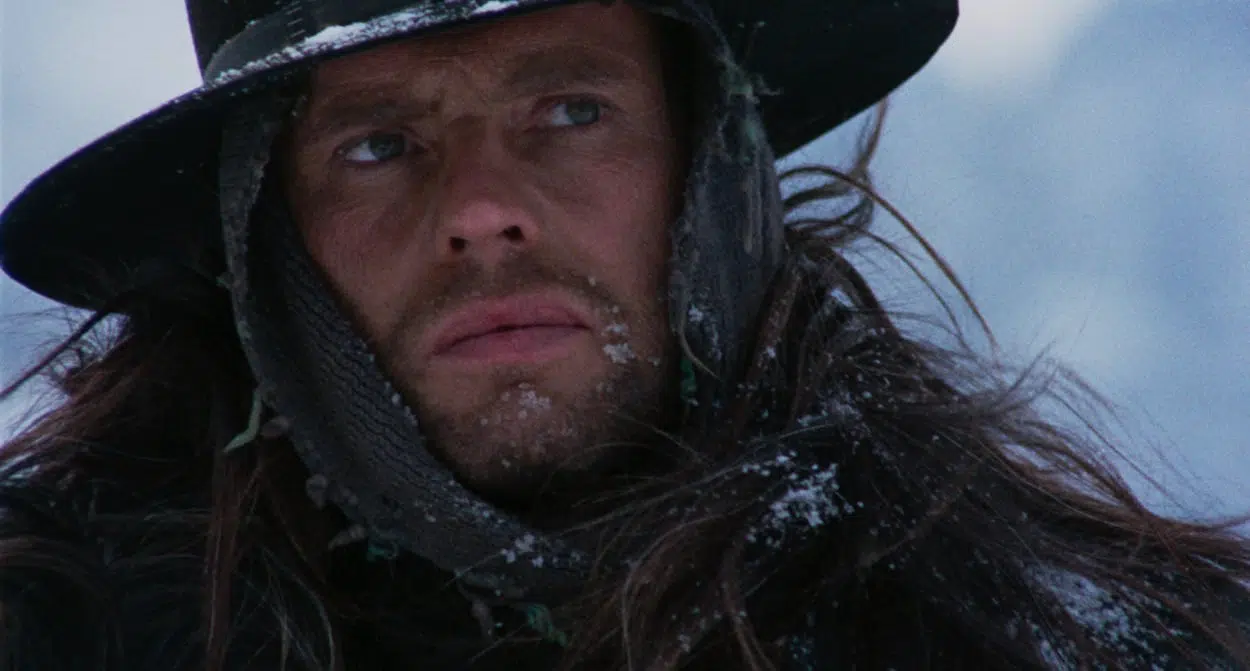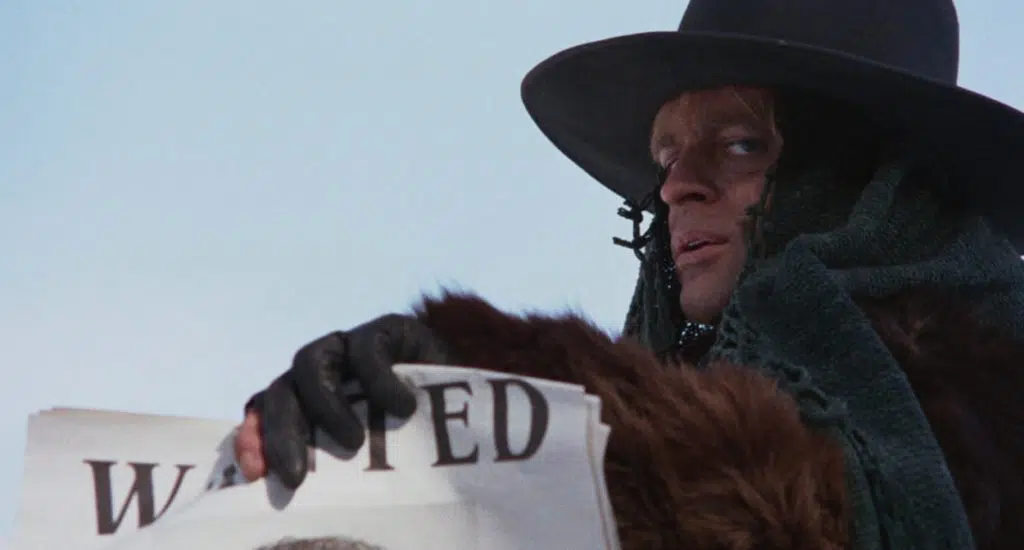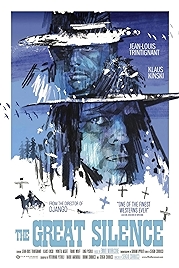One of the great puzzles about Sergio Corbucci’s 1968 spaghetti western The Great Silence (Il Grande Silenzio) is how shakily it starts. In one gruesomely unsteady shot after another, using lenses that are way too long, cinematographer Silvano Ippoliti appears to be putting on a demonstration of the genre’s technical shortcomings. Distant figures swing wildly all over the frame, rendering action almost impossible to follow.
Stick with it, it settles down. By the end, as events build towards a climax that’s satisfying because it’s so unexpected, Ippoliti and Corbucci have relaxed into a groove and are delivering cinematic storytelling at its finest. Scenes play out in as much time as feels necessary, minor characters get enough space to develop, the weather and landscape become a more obvious part of the plot dynamics, wide establishing shots are contrasted with severe close-ups and dramatic switchback editing, while Ennio Morricone’s score soars in a sweet and ultimately ironic way.
Morricone thought it one of his best, and Corbucci also thought The Great Silence one of his best films. The settings really help. Rather than shoot on the Spanish plain, where so many Euro-westerns were made, Corbucci took off for the Italian Dolomites, which stand in for a snowbound Utah, where an elemental story plays out all the better in the stark white landscapes.
Star Jean-Louis Trintignant could speak no English and so it was decided to make his character a mute – I’ve no idea why this was a problem since the whole film was dubbed (appallingly) anyway – he is the Silence of the title, though obviously the Great Silence, like the Big Sleep, is another euphemism for Death.
So maybe not a Man with No Name, but certainly a Man with No Voice, Silence is the familiar lone, sharpshooting gunman, sucking on a cheroot as he rights wrongs in a West that is about to be civilised – “the old West is dead” , says a minor character early on. But it isn’t quite.
Wearing the black hat is Klaus Kinski as the psychopathic killer Tigrero (or Loco, depending on the dub you’re watching), leader of a gang of bounty hunters who are keen to kill as many outlaws as they can before an upcoming amnesty ruins their business, and they don’t care too much how sloppily they go about their work, particularly Tigrero.
So when a widow loses her son, and a woman her husband, they both turn to Silence for help. Cue a series of gunfights in which Silence always “draws second, but shoots first,” as Tigrero has observed, a fact he’ll put to use when the eventual showdown between the two men climaxes the film.
It’s a case of the familiar and the slightly novel – Kinski plays the whackjob Tigrero as a slightly effeminate man, the ineffectually stupid but honest town sheriff is played by Frank Wolff, who’s usually a gruff baddie, Silence gets some love interest in the shape of the particularly effective Vonetta McGee, a black woman out West being a rare sight in 1960s westerns, one with this much agency doubly so.
The film is often described as a left wing or anti-capitalist western, on account of the outlaws being fairly benign and the bounty hunters being the bad guys. But there’s a right wing reading to be had too, since the bounty hunters are instruments of a big state that’s overreaching itself. Perhaps The Great Silence’s great strength is its elemental nature – stark figures against a white backdrop, like a version of shadow-puppet theatre, add your own ideology. As for the idea, floated by Corbucci himself, that he was addressing in some way the deaths of Che Guevara and Malcolm X… bizarre. The Great Silence does not wander far from the western’s beaten track thematically, not matter which way you squint.
Things do not end well for Silence and Pauline (McGee) and the orgy-of-killing grand finale is considered by many to be a problem. The studio didn’t like it, for one, and asked for an alternative happy ending, which they also didn’t like.
You can see those endings on the newish restorations. Film Movement do a 50th anniversary one in the US and in the UK I suspect (because most of the extras are the same) that the invariably excellent Eureka are using the same 2K scan of the original negative on their UK release.
The Great Silence – Watch it/buy it at Amazon
I am an Amazon affiliate
© Steve Morrissey 2021


